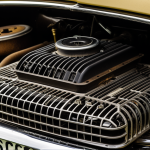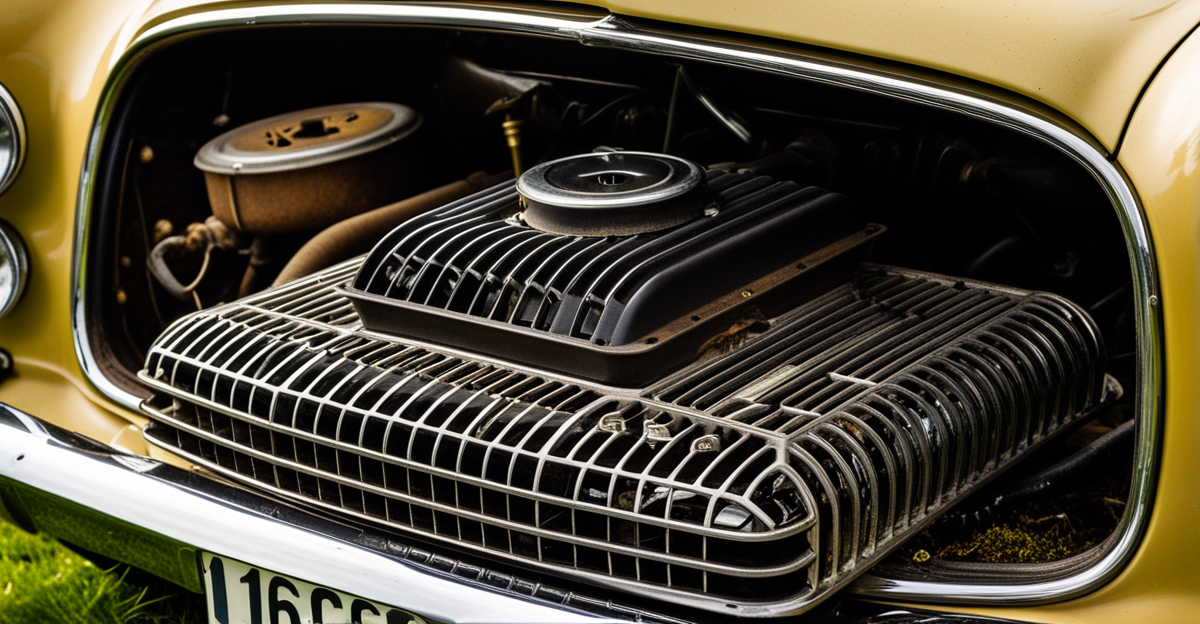Overview of Sustainable Disposal Methods
In the realm of automotive waste management, sustainable disposal methods hold significant importance. These methods not only minimize the environmental impact but also promote the efficient use of resources. There are several key approaches: recycling, upcycling, and responsible disposal.
Recycling
Recycling is a popular sustainable disposal method. It involves breaking down car parts to reclaim materials like steel, aluminum, and plastic, which can be reused in manufacturing. This process reduces the need for raw materials and decreases landfill waste. Furthermore, modern recycling facilities are equipped to handle the complexities involved in car part recycling, ensuring the process is both efficient and effective.
A découvrir également : Unlocking UK Compliance: The Definitive Guide to Installing Aftermarket Body Kits
Upcycling
Similarly, upcycling transforms automotive parts into new products without extensive processing. Creative reuse of classic car parts includes converting them into furniture, decor items, or even sculptures. This artful method conserves resources and fosters innovation, highlighting the aesthetic potential of components that would otherwise contribute to waste.
Responsible Disposal
Meanwhile, responsible disposal aims to mitigate the adverse impacts of hazardous waste. Certain car parts contain materials that must be disposed of carefully to prevent environmental harm. By adhering to eco-friendly disposal practices, especially for batteries and fluids, we can substantially reduce their negative effects.
Avez-vous vu cela : Secure Your Ride: Comprehensive Dashcam Installation Guide for UK Cars
Improper disposal of automotive waste can severely impact the environment through soil and water contamination. Thus, adopting these eco-friendly disposal methods is crucial to maintaining ecological integrity. Emphasizing sustainability in automotive waste management is a necessary step towards protecting our planet for future generations.
Regulations and Guidelines in the UK
Within the United Kingdom, waste management laws play a crucial role in promoting sustainable disposal practices. These UK regulations ensure that automotive waste is handled responsibly, minimizing environmental harm. The Environment Agency, as a regulatory body, oversees compliance and guides both individuals and businesses in adhering to correct procedures. Proper understanding and implementation of these guidelines are essential.
Key Regulations Governing Waste Disposal in the UK
The UK has implemented comprehensive legislative measures to manage automotive waste effectively. Notable regulations include the Waste Framework Directive, which sets the groundwork for sustainable disposal standards. Compliance with these laws is crucial in preventing the detrimental effects of improper waste management.
Overview of the Environment Agency’s Role in Waste Management
The Environment Agency not only enforces waste management laws but also provides resources and guidance on best practices. By monitoring compliance, the agency strives to safeguard natural resources and public health. Their work is pivotal in ensuring automotive disposal aligns with eco-friendly protocols.
Importance of Compliance for Individuals and Businesses
Adhering to automotive disposal guidelines is essential for both legal compliance and environmental protection. Non-compliance can lead to significant penalties and environmental hazards. Hence, embracing these guidelines is not just a legal obligation but a necessary action towards sustainable living.
Recycling Classic Car Parts
The world of car part recycling is evolving rapidly, offering numerous benefits to both the environment and the economy. Recycling methods for classic car parts are a brilliant mix of innovation and necessity, as they contribute significantly to sustainable practices.
Types of Car Parts Suitable for Recycling
When it comes to recycling, not every car part is fit for the process. Typically, materials like steel, aluminum, and certain plastics from classic car parts can be efficiently recycled. For example, car bodies are often composed of high-quality steel, making them perfect candidates for recycling. Similarly, aluminum components, such as wheels and engine blocks, are valuable due to their versatility and energy-efficient recovery processes.
Recycling Processes and Facilities
To ensure effective recycling, specialized facilities are equipped to handle and process various materials. These facilities use methods like shredding and separation technology to break down car parts into reusable resources. The modern focus on efficient and eco-friendly disposal means that facilities are constantly improving their methods to enhance recovery rates.
Benefits of Recycling for the Environment and Economy
Recycling offers substantial environmental and economic benefits. Environmentally, it reduces the need for mining new raw materials, thus conserving energy and reducing greenhouse gas emissions. Economically, recycled materials provide a cost-effective alternative for manufacturing, supporting industries in reducing expenses and boosting sustainability efforts. Overall, recycling classic car parts is a pivotal component of resource conservation and waste reduction.
Upcycling Classic Car Parts
In the world of automotive sustainability, upcycling methods offer a creative and eco-friendly way to repurpose classic car components. Unlike traditional recycling, which breaks down materials to their base elements, upcycling involves transforming old car parts into new, functional items with minimal processing. This approach not only conserves resources but also encourages creativity and innovation.
Definition and Benefits of Upcycling
Upcycling is the process of reusing materials to create products with a higher value than the original form. For classic car parts, this can include turning components into furniture, art, or home decor. The benefits of upcycling are numerous: it reduces waste, decreases the demand for new raw materials, and often results in unique, one-of-a-kind creations.
Creative Ideas for Upcycling Classic Car Components
The possibilities for creative reuse are vast. For instance, an old car engine block can be transformed into a stylish coffee table, or a steering wheel can be repurposed as the base of a unique clock. These projects not only keep materials out of landfills but also add a touch of automotive nostalgia and character to any space.
Case Studies of Successful Upcycling Projects
Several successful upcycling initiatives have showcased the potential of classic car upcycling. One notable project turned vintage car interiors into luxury furniture pieces, captivating car enthusiasts and design aficionados alike. These case studies highlight the potential for upcycling to merge sustainability with artistic expression, crafting products that tell a story of innovation and environmental consciousness.
Responsible Disposal Practices
In the automotive industry, responsible disposal practices play a crucial role in addressing hazardous materials. Proper management of these materials not only protects the environment but also ensures public safety.
Identifying Hazardous Materials in Car Parts
Car parts often contain hazardous materials such as lead-acid batteries, brake fluids, and engine oils. These substances can pose significant environmental risks if not disposed of properly. Recognizing these elements in vehicles is the first step towards implementing safe disposal techniques.
Safe Disposal Methods for Hazardous Materials
The safe disposal of hazardous materials involves eco-friendly procedures to neutralize or recycle these substances. For instance, lead-acid batteries can be recycled at specialized facilities, where the lead is extracted and reused, minimizing landfill waste. Additionally, automotive fluids should be handled by professionals to ensure they are disposed of in compliance with environmental regulations.
Educating Others on Responsible Disposal
Raising awareness about responsible disposal is vital in fostering sustainable practices. Community outreach initiatives can effectively disseminate information on the importance of responsible waste management. Educational programs and workshops empower individuals and businesses to adopt more eco-friendly disposal habits, ultimately contributing to the preservation of our planet’s health.
Resources for Finding Disposal and Recycling Facilities
In the pursuit of sustainable disposal and recycling of classic car parts, having access to reliable recycling resources is essential. Numerous tools and websites offer assistance in locating nearby facilities that specialise in eco-friendly and responsible disposal.
Facility Locators and Tools
-
Online Platforms: These platforms provide comprehensive databases to identify local disposal and recycling centres equipped to handle diverse automotive waste. They often categorise facilities based on the specific materials they process, such as metals, fluids, or electronic components.
-
Mobile Apps: Certain apps enable users to easily find the nearest disposal resources using geolocation. These are particularly useful for quick searches and for understanding what types of materials each facility accepts.
Importance of Local Resources and Community Programs
Local resources and community programs play a pivotal role in promoting sustainable disposal practices. By leveraging community-driven initiatives, individuals can access more personalised services that cater to area-specific disposal regulations and requirements.
Networking with Organisations
Building a network of organizations promoting sustainable disposal enhances community knowledge and engagement. These organisations often collaborate to provide educational resources, organize public events, and offer workshops on best disposal practices, ensuring that both individuals and businesses have the support they need to manage automotive waste responsibly.
FAQ on Classic Car Part Disposal
Navigating the intricacies of disposal FAQs can present challenges, particularly with respect to classic car parts. Below, we address some common questions and misconceptions.
What methods exist for disposing of classic car parts?
The primary disposal methods are recycling, upcycling, and responsible disposal. Recycling involves reclaiming materials like steel and aluminum through car part recycling processes. By upcycling, old parts are transformed into new, value-added creations, minimizing waste. Responsible disposal targets hazardous materials, ensuring they’re handled in an eco-friendly way.
Why is understanding disposal options important?
Understanding various disposal options is crucial for sustainable practices. An awareness of options like eco-friendly disposal allows individuals and businesses to make informed choices, reduce environmental harm, and comply with waste management laws.
What resources are available for further questions?
Numerous recycling resources and community programs can offer guidance and support. Facility locators and tools help find disposal facilities, while organizations dedicated to sustainable disposal provide educational materials and advice. These resources ensure individuals are well-equipped to manage the disposal of classic car parts effectively.










